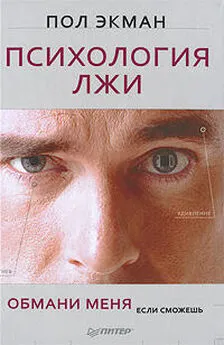Пол Кидуэлл - Психология города
- Название:Психология города
- Автор:
- Жанр:
- Издательство:Манн, Иванов и Фербер
- Год:2018
- Город:Москва
- ISBN:9785001175575
- Рейтинг:
- Избранное:Добавить в избранное
-
Отзывы:
-
Ваша оценка:
Пол Кидуэлл - Психология города краткое содержание
Психология города - читать онлайн бесплатно ознакомительный отрывок
Интервал:
Закладка:
47
Gallimore J. M., Brown B. B., Werner C. M. Walking routes to school in new urban and suburban neighborhoods: An environmental walkability analysis of blocks and routes // Journal of Environmental Psychology. 2011. Vol. 31 (2). Pp. 184–191.
48
Fitzpatrick C. D. The effect of roadside elements on driver behavior and run-off-the-road crash severity: master’s thesis, February 2014 // http://scholarworks.umass.edu/theses/1037.
49
Hanyu K. Visual properties and affective appraisal in daylight // Journal of Environmental Psychology. 2000. September. Vol. 20 (3). Pp. 273–284.
50
Ikemi M. The effects of mystery on preference for residential facades // Journal of Environmental Psychology. 2005. June. Vol. 25 (2). Pp. 167–173.
51
Motoyama Y., Hanyu K. Does public art enrich landscapes? The effect of public art on visual properties and affective appraisals of landscapes // Journal of Environmental Psychology. 2014. December. Vol. 40. Pp. 14–25.
52
Appleyard D. The environmental quality of city streets: The residents viewpoint // Journal of the American Planning Association. 1969. Vol. 35. Pp. 84–101.
53
Статья основана на подготовительной работе магистра Джошуа Харта для кандидатской диссертации в Центре транспорта и общества в Университете Западной Англии. Полный текст см. по ссылке: Hart J., Parkhurst G. 2011 // http://www.transport.uwe.ac.uk/publications/publications.asp.
54
Matherson M. I. et al. Noise and health. The effects of road traffic and aircraft noise exposure on children’s episodic memory: the RANCH project. Vol. 12 (49). October — December 2010. Pp. 244–254.
55
Jeon J. Y., Lee P. J., You J. Perceptual assessment of quality of urban soundscapes with combined noise sources and water sounds // Journal of Acoustical Society of America. 2010. Vol. 127 (3). Pp. 1357–1366.
56
Weinstein N. D. Community noise problems: Evidence against adaptation // Journal of Environmental Psychology. 1982. June. Vol. 2 (2). Pp. 87–97.
57
Ohrstrom E., Hadzibajramovic E., Holmes M., Svensson H. Effects of road traffic noise on sleep: Studies on children and adults // Journal of Environmental Psychology. 2006. June. Vol. 26 (2). Pp. 116–126.
58
Shankar S., Stevenson C., Pandey K. et al. A calming cacophony: Social identity can shape the experience of loud noise // Journal of Environmental Psychology. 2013. December. Vol. 36. Pp. 87–95.
59
Honold J., Beyer R., Lakes T., van der Meer E. Multiple environmental burdens and neighborhood-related health of city residents // Journal of Environmental Psychology. 2012. December. Vol. 32 (4). Pp. 305–317.
60
Carp F. Environmental effects upon the mobility of older people // Environment and Behaviour. 1980. Vol. 12 (2). Pp. 139–156.
61
Rubenstein H., Motoyama T., Hartjens P. Defensible space — crime prevention through urban design and architectural design for crime prevention (a methodological review), The Link Between Crime and the Built Environment 2. American Institutes for Research: Center for Effective Collaboration and Practice, USA, 1980.
62
Brown B. B., Altman I. Territoriality, defensible space and residential burglary: An environmental analysis // Journal of Environmental Psychology. 1983. Vol. 3.3. Pp. 203–220.
63
Gustafson P. Meaning of place: everyday experience and theoretical conceptualizations // Journal of Environmental Psychology. 2001. March. Vol. 21 (1). Pp. 5–16.
64
Lewicka M. Place attachment, place identity, and place memory: Restoring the forgotten city past // Journal of Environmental Psychology. 2008. September. Vol. 28 (3). Pp. 209–231.
65
Сейчас б о льшая часть исторической Галиции находится на территории Украины. В Польше — юг Подкарпатского воеводства (Перемышльская земля). Прим. ред.
66
Wells J. C., Baldwin E. D. Historic preservation, significance, and age value: A comparative phenomenology of historic Charleston and the nearby new-urbanist community of L’On // Journal of Environmental Psychology. 2012. December. Vol. 32 (4). Pp. 384–400.
67
Casakin H., Billig M. Effect of settlement size and religiosity on sense of place in communal settlements // Environment and Behaviour. 2009. Vol. 41 (6). Pp. 821–835.
68
Halicz K. Stopień identyfikacji z miejscem w mieście satelickim na przykładzie Radomia (Place attachment in the satellite town: The case of Radom), unpublished research. University of Warsaw, 2003.
69
Документальный фильм студии Omnibus об Эрике Лайонсе The More We Are Together, часть Архитектурной коллекции BBC4, премьера в 1969 году.
70
Перевод Алексея Андреева.
71
Gifford R. The consequences of living in high-rise buildings // Architectural Science Review. 2007. Vol. 50 (1). Pp. 2–17.
72
Marzuk P. M., Leon A. C., Tardiff K. et al. The effect of access to lethal methods of injury on suicide rates // Archives of General Psychiatry. 1992. Vol. 49. Pp. 451–458.
73
Lester D. Suicide by jumping in Singapore as a function of high-rise apartment availability // Perceptual and Motor Skills. 1994. Vol. 79 (1). P. 74.
74
Saegert S. A systematic approach to high density settings: Social and physical environmental factors // Gurkaynak M. R., LeCompte W. A. Human Consequences of Crowding. New York: Plenum Press, 1979. Pp. 67–82.
75
Franck K. Community by design // Sociological Inquiry. 1983. Vol. 53. Pp. 289–311.
76
Holahan C. J., Wilcox B.L. Environmental satisfaction in high-rise and low-rise residential settings: A Lewinian perspective // J. R. Aiello, A. Baum, eds. Residential Crowding and Design. New York: Plenum Press, 1979. Pp.127–140.
77
Public priorities in urban Canada: A survey of community concerns. Canada Mortgage and Housing Commission, Ottawa: CMHC, 1979.
78
Bagley C. The built environment as an influence on personality and social behavior: A spatial study // D. Canter, T. Lee, eds. Psychology and the Built Environment. London: Wiley, 1974. Pp. 156–162.
79
Fanning D. M. Families in flats // British Medical Journal. 1967. Vol. 4. Pp. 382–386.
80
Издана на русском языке: Александер К., Исикава С., Силверстайн М. Язык шаблонов. Города. Здания. Строительство. М.: Издательство Студии Артемия Лебедева, 2014.
81
Bagley C., указ. соч.
82
Aminzadeh B. High rise impacts on urban environment case study: Alahieh-Tehran // Journal of Environmental Studies. March 2001. Pp. 105–116.
83
Hagerhall C. M., Purcell T., Taylor R. Fractal dimension of landscape silhouette outlines as a predictor of landscape preference // Journal of Environmental Psychology. 2004. Vol. 24 (2). Pp. 247–255; Moshaver M. K., Asari H. A. The effect of tall facades complexity on the aesthetic quality of urban landscape (The case study: Tehran-Iran) // Applied Mathematics in Engineering, Management and Technology. 2014. Vol. 2 (5). Pp. 146–156.
84
Mackintosh E. High in the city // EDRA: Environmental Design Research Association. 1982. Vol. 13. Pp. 424–434.
85
Лоув Р. Последний ребенок в лесу. М.: Добрая книга, 2007.
86
Czalczynska-Podolska M. The impact of playground spatial features on children’s play and activity forms: an evaluation of contemporary playgrounds’ play and social value // Journal of Environmental Psychology. 2014. Vol. 38. Pp. 132–142.
87
Huttenmoser M. Children and their living surroundings // Children’s Environments. 1995. Vol. 12. Pp. 403–413.
88
Van den Berg A. E. et al. Green space as a buffer between stressful life events and health // Social Science & Medicine. 2010. Vol. 70 (8). Pp. 1203–1210.
89
Tyrvainen L., Ojala A., Korpela K. et al. The influence of urban green environments on stress relief measures: A field experiment // Journal of Environmental Psychology. 2014. June. Vol. 38. Pp. 1–9.
90
Нawkins J. L. et al. Allotment gardening and other leisure activities for stress reduction and healthy aging // HortTechnology. 2011. Vol. 21 (5). Pp. 577–585.
91
Thompson C. W. et al. More green space is linked to less stress in deprived communities: Evidence from salivary cortisol patterns // Landscape and Urban Planning. 2012. Vol. 105 (3). Pp. 221–229.
92
Shalev I. Pictorial and mental arid landscape images reduce the motivation to change negative habits // Journal of Environmental Psychology. 2016. Vol. 45. Pp. 30–39.
93
Van den Berg A. E., указ. соч.
94
Burden A. How public spaces make cities work, ted.com, Architecture: https://www.ted.com/talks?sort=newest&topics%5B%5D=architecture&q=Burden.
95
Volker S., Kistemann T. The impact of blue space on human health and well-being — Salutogenetic health effects of inland surface waters: A review // International Journal of Hygiene and Environmental Health. 2011. Vol. 214 (6). Pp. 449–460.
96
White M. et al. Blue space: The importance of water for preference, effect, and restorativeness ratings of natural and built scenes // Journal of Environmental Psychology. 2010. Vol. 30 (4). Pp. 482–493.
97
Kweon B.-S. et al. Anger and stress: the role of landscape posters in an office setting // Environment and Behavior. 2008. Vol. 40 (3). Pp. 355–381.
98
Wheeler B. W. et al. Does living by the coast improve health and wellbeing? // Health & Place. 2012. Vol. 18 (5). Pp. 1198–1201.
99
White M. P. et al. Coastal proximity, health and well-being: results from a longitudinal panel survey // Health & Place. 2013. Vol. 23. Pp. 97–103.
100
Ashbullby K. J. et al. The beach as a setting for families’ health promotion: A qualitative study with parents and children living in coastal regions in Southwest England // Health & Place. 2013. Vol. 23. Pp. 138–147.
Читать дальшеИнтервал:
Закладка:










